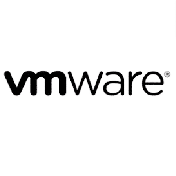Seminarinhalt
This course describes advanced operator actions to implement new policies, coupling facilities, structures and sysplex related operational enhancements. It diagnoses problems and demonstrates recovery techniques in these areas. These include:
If you are enrolling in a Self Paced Virtual Classroom or Web Based Training course, before you enroll, please review the Self-Paced Virtual Classes and Web-Based Training Classes on our Terms and Conditions page, as well as the system requirements, to ensure that your system meets the minimum requirements for this course.
/terms
Objective
- Identifying HMC problems and recovery, including IPL problems during system and sysplex activation
- Recovery with and without SFM policies
- Couple data set failures
- CF and CF structure failures
If you are enrolling in a Self Paced Virtual Classroom or Web Based Training course, before you enroll, please review the Self-Paced Virtual Classes and Web-Based Training Classes on our Terms and Conditions page, as well as the system requirements, to ensure that your system meets the minimum requirements for this course.
/terms
Objective
- Use HMC classic or tree UI, create HMC groups, load profiles, and
- provide tips and recommendations for HMC use
- Initialize sysplex system images and identify problems reported via system consoles and the HMC
- Identify sysplex components, define resource and data sharing differences in relation to recovery options, discuss various configurations and system duplexing
- Perform related display commands to identify sysplex status and recovery actions for IPL problems during system activation
- Manage couple data sets, format CDS, define policies, and start and verify they are working as desired
- Implement configurations supporting GRS STAR, JES checkpoint, and ECS using structures in the CF
- Identify couple data set failures, CF and CF structure failures
- Identify policy change pending conditions and correct as necessary
- Remove a CF from the sysplex as in the case of required maintenance to a CF
- Identify and correct problems during structure rebuild process such as insufficient storage in the CF
- Add a new System z CF to the sysplex dynamically using a sysplex wide dynamic activation with Hardware Configuration Definition (HCD) facility
- Perform recovery procedures with and without SFM policies
- Define Server Time Protocol implementation, terminology, and supporting configurations
Programm
Day 1
Welcome.
Unit 1: Parallel Sysplex overview Exercise 1: Setup for remote lab access
Exercise 2: HMC 2.n.n navigation hints and tips: Classic and tree UI (optional)
Exercise 3: Groups and profiles for sysplex activation Exercise 4: MCS console setup through OSA ICC Exercise 5: Using commands to determine sysplex status
Day 2
Unit 2: Sysplex initialization, CDS usage, and recovery
Exercise 5: Using commands to determine sysplex status (continued) Exercise 6: ECS and dynamic GRS STAR activation
Exercise 7: JES2 reconfiguration
Exercise 8: CDS mismatch during plex activation
Day 3
Unit 3: Managing CFs, structures, policies, and recovery
Exercise 9: Logger
Exercise 10: CFRM change pending conditions and recovery options for FP connections
Exercise 11: VTAM and ISTGENERIC demo Exercise 12: Managing coupling facilities
Day 4
Unit 4: Dynamic CF implementation, SFM, and ARM
Exercise 12: Managing coupling facilities (continued) Exercise 13: Add new CF and manage reset profile Exercise 14: Implementing SM duplexing
Exercise 15: Sysplex failure management
Exercise 16: SFM storage reconfiguration (optional)
Day 5
Machine lab optional exercises 17 and 18
Unit 5: STP, DB2, and structure recovery and removal overview
Welcome.
Unit 1: Parallel Sysplex overview Exercise 1: Setup for remote lab access
Exercise 2: HMC 2.n.n navigation hints and tips: Classic and tree UI (optional)
Exercise 3: Groups and profiles for sysplex activation Exercise 4: MCS console setup through OSA ICC Exercise 5: Using commands to determine sysplex status
Day 2
Unit 2: Sysplex initialization, CDS usage, and recovery
Exercise 5: Using commands to determine sysplex status (continued) Exercise 6: ECS and dynamic GRS STAR activation
Exercise 7: JES2 reconfiguration
Exercise 8: CDS mismatch during plex activation
Day 3
Unit 3: Managing CFs, structures, policies, and recovery
Exercise 9: Logger
Exercise 10: CFRM change pending conditions and recovery options for FP connections
Exercise 11: VTAM and ISTGENERIC demo Exercise 12: Managing coupling facilities
Day 4
Unit 4: Dynamic CF implementation, SFM, and ARM
Exercise 12: Managing coupling facilities (continued) Exercise 13: Add new CF and manage reset profile Exercise 14: Implementing SM duplexing
Exercise 15: Sysplex failure management
Exercise 16: SFM storage reconfiguration (optional)
Day 5
Machine lab optional exercises 17 and 18
Unit 5: STP, DB2, and structure recovery and removal overview



